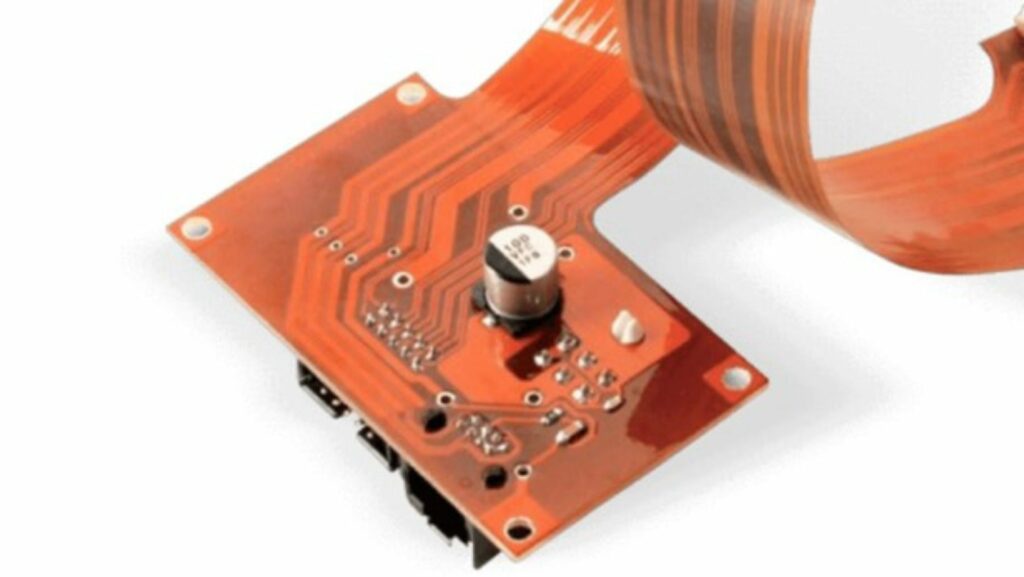In the world of electronics, PCBs, or Printed Circuit Boards, play a pivotal role. But did you know there’s more than one type of PCB? You’ve likely heard of rigid PCBs, but what about their flexible counterparts?
Rigid PCBs and flexible PCBs each have their unique characteristics and uses. While they both serve the same basic function, their differences can have a significant impact on the design and functionality of electronic devices. For expert insights and high-quality manufacturing, you can rely on OurPCB Flexible PCB manufacturer. OurPCB is a leading provider specializing in both rigid and flexible PCBs, known for their commitment to quality and innovation in the industry.
Overview of PCB Technology
It’s my pleasure to delve deeper into the world of PCB technology, shedding light on its integral components.
What Is a PCB?
A Printed Circuit Board, popularly known as PCB, stands as the backbone of any electronic gadget. Acting as the wiring area for surface-mounted and socketed components in electronic devices, a PCB plays a key role in the basic function and life of our everyday electronics. It comprises laminated sheets of non-conductive material, interspersed with layers of conductive material, shaped into circuits. These circuits then connect the components of the device, deciding its overall operational capability.
Types of PCBs: Rigid and Flexible
In our electronics-driven era, two types of PCBs primarily rule the roost, these are: Rigid PCBs and Flexible PCBs.
Rigid PCBs, as their name suggests, cannot be bent or folded without causing damage. These are commonly used in appliances like refrigerators, televisions and computers, staking claim with their high-grade durability and capacity for complex circuits.
On the other hand, their flexible counterparts, Flexible PCBs, bring malleability to the table, which is absent in Rigid PCBs. Consisting of a thin, bendable substrate, they lend themselves well to tight spaces and devices that need to flex during operation. Examples can be found in cell phones and handheld devices.
Characteristics of Rigid PCBs
Rigid PCBs possess defined attributes that make them indispensable parts of electronic contrivances. Notably, their composition, structure, and common applications set them apart.
Composition and Structure
Constructed from solid substrate materials like fiberglass, Rigid PCBs offer a solid structure. Their hard-wearing nature comes from a uniform blend of copper circuits and non-conductive elements such as epoxy resin and glass fiber. To illustrate, when viewing a cross-section of a rigid PCB, one notices that copper circuits, etched into the non-conductive layer, create a network providing electrical paths between components. Consequently, rigid PCBs exhibit attributes of sturdiness and intractability, a contrast to their flexible counterparts.
Common Applications
Their robust construction leads to suitability in devices built for durability and less intentional movement. You would find these PCBs in everyday gadgets. Examples include desktop computers where they serve as the motherboard and televisions where they provide essential connectivity. Additionally, appliances in your home like the refrigerator or microwave all house rigid PCBs, pointing to the ubiquity of the rigid PCB use. The robustness of these PCBs offers less risk of damage in applications requiring longevity and stability, thus affirming their trusted presence in electronic devices.
Characteristics of Flexible PCBs
Diving deeper into the diversity of PCBs, let’s now explore the characteristics of Flexible PCBs. Pliable by nature and distinguished from their rigid counterparts, these flexible variants harbor unique composition, structural elements, and subsequent applications.
Composition and Structure
Flexible PCBs, as their name suggests, are composed of materials that are malleable and enduring.

The primary component of these adaptable boards is polyimide, a high-temperature resistant polymer. This flexible material offers significant heat resistance while maintaining its pliability. The circuits imprinted on these polyimide films utilise copper, similar to rigid PCBs.
To protect the copper circuits, a layer of protective covering typically consists of acrylic-based materials is added. This trio of the polyimide substrate, copper circuits, and protective layer forms the compact, streamlined structure of a flexible PCB, facilitating their ability to twist and met morph into various device enclosures.
Advantages in Design and Use
When it comes to design, Flexible PCBs have an edge due to their versatility and adaptability. Their ability to be bent, folded and rolled allows engineers to explore innovative approaches and exploit confined spaces in device design. Instead of modifying device dimensions to fit the PCB, designers can customise the flexible PCB to match the device anatomy.
Not only do these flexible boards score high in design adaptability, but they also improve performance by reducing the likelihood of mechanical failures. Their light-weight nature augments the overall device performance by reducing weight, making them a go-to option in portable electronics such as smartphones and tablets.
While this attribute underlines their advantage in design, the usage of flexible PCBs also contributes significantly to cost savings. With fewer assembly components as compared to rigid PCBs (owing to integrated flex circuits), the assembly process becomes quicker, simplified and thus more cost-efficient. This combined benefit of reduced assembly time and decreased likelihood of component failure paves the way for cost-effectiveness in the long run.
Key Differences Between Rigid and Flexible PCBs
Exploring the distinction between rigid and flexible PCBs draws attention to various key differences, primarily revolving around their distinct material composition, flexibility, reliability, durability, and associated costs.
Material and Flexibility
Rigid PCBs are predominantly crafted from solid materials like fiberglass and epoxy, providing a robust structure and limited flexibility. Contrarily, flexible PCBs rely on both polyimide and copper circuits, contributing to their pliability. Due to their flexible nature, businesses employ them in intricate designs and confined spaces.
Durability and Reliability
When assessing durability, rigid PCBs typically excel with their sturdy composition counteracting wear and tear effectively. Moreover, their performance exhibits minimal fluctuation under various temperature and pressure conditions, making them a reliable choice for stable environments. However, flexible PCBs showcase immense resilience despite their flexible nature. Their unique ability to withstand folding and bending makes them ideally suited for applications demanding continual adjustments in form, such as portable electronic devices.
Cost Comparison
Cost comparison yields interesting insights. Rigid PCBs may appear cost-effective initially due to lower manufacturing expenses. But considering longevity, flexible PCBs often outperform them by reducing replacement costs over time, particularly when deployed in dynamic environments. Therefore, while initial costs may be higher for flexible PCBs, they tend to provide superior value for money in the long run. Nevertheless, the exact cost-benefit ratio depends largely on the application’s nature and requirements.
Choosing Between Rigid and Flexible PCBs
When faced with the choice between rigid and flexible PCBs, there are multiple factors to consider. The specifics of your project and its use case will guide the decision-making process.
Factors to Consider
The principal elements to consider while selecting between these two types of PCBs are their flexibility, durability, cost, and the intended application’s needs. To start, evaluate the circuit board’s flexibility requirements. If your design necessitates bending, twisting, or wrapping around various components, a flexible PCB is paramount. Conversely, for robustness and stress resistance, rigid PCBs prove to be more effective.
Examining durability, rigid PCBs outperform in static applications due to their solid fibreglass and epoxy composition. Flexible PCBs, despite their potential for initial wear, show resilience against bending and folding, and stand the test of time in dynamic environments.
The financial aspect is key as well. Flexible PCBs might incur a higher upfront cost, but can reduce the need for frequent replacements. However, if your project doesn’t warrant the flexibility, the financial benefit might lean towards rigid PCBs.
Application-Specific Recommendations
The choice between rigid and flexible PCBs heavily depends on the application. In static applications like in desktop computers or televisions, rigid PCBs reign supreme due to their resistance against wear and tear.

On the other hand, for dynamic applications like in smartphones, tablets, wearables, or devices with strict space constraints, flexible PCBs provide the needed adaptability.
Remember, one isn’t inherently better than the other; it all boils down to the requirements of your project. Take these factors into account to make an informed decision between rigid and flexible PCBs.
FAQs
What is a rigid PCB?
A rigid PCB is a type of printed circuit board that is solid and inflexible, providing a stable base for electronic components. These boards are commonly used in desktop computers, televisions, and other electronic devices that require a firm structure.
What is a flexible PCB?
A flexible PCB is a type of circuit board that can bend and flex, making it ideal for applications where the board needs to fit into a compact or irregular space. They are commonly used in wearable electronics, smartphones, and medical devices.
What are the main differences between rigid and flexible PCBs?
The main differences lie in their construction and applications. Rigid PCBs are inflexible and provide a sturdy base, while flexible PCBs can bend and twist, allowing for more versatile designs and applications in tight or dynamic spaces.
Which is more durable: rigid or flexible PCBs?
Durability depends on the application. Rigid PCBs are durable in static environments, whereas flexible PCBs are designed to withstand bending and movement without breaking.
Can flexible PCBs replace rigid PCBs?
In some cases, flexible PCBs can replace rigid ones, especially where space constraints and the need for flexibility are crucial. However, the choice depends on the specific requirements of the electronic device and its environment.

